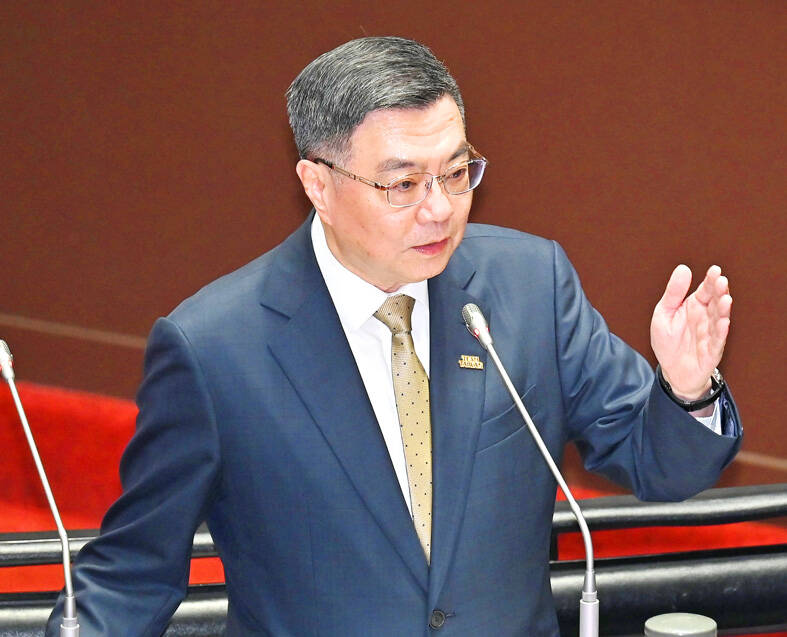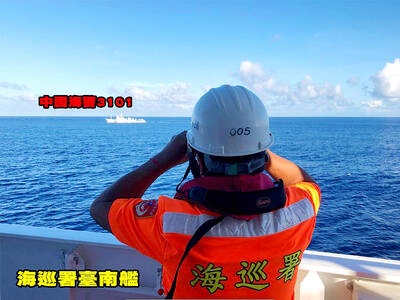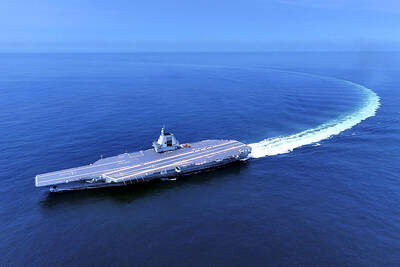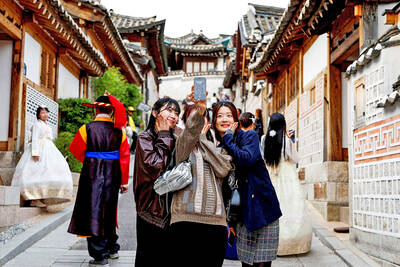The 32 percent tariff US President Donald Trump announced last week for Taiwan is considered “extremely high,” so the government has proposed a NT$88 billion (US$2.69 billion) support package for the worst-case scenario, Premier Cho Jung-tai (卓榮泰) said in a presentation at the legislature on Friday.
A tariff of 30 percent or higher would have the most significant impact among the three scenarios for which the government had drafted responses, he said.
The “low” tariff scenario would have been a 10 percent to 20 percent levy, which would have had a manageable impact on local industries and its support plan would have cost NT$36.1 billion, Cho said.

Photo: Tu Chien-jung, Taipei Times
The “high” tariff scenario was a 20 percent to 30 percent duty, which would have had a high risk of impacting manufacturing sectors such as machinery and electronics, and the exports of agricultural and fishery products, which would have needed a support plan of about NT$57.6 billion, he said.
The “reciprocal” tariffs for countries the US has a trade deficit with were scheduled to take effect on Wednesday last week, but Trump announced a 90-day pause on the new measures, while retaining the 10 percent duties imposed last Saturday on nearly all countries and territories.
The 32 percent tariff for Taiwan is higher than the 24 percent and 25 percent duty set for Japan and South Korea respectively.
The nation is expected to see a drop of at least 21 percent in the value of goods shipped to the US, as US buyers are to see higher prices for products from Taiwan.
To avoid US clients placing orders with competitors in other countries, Taiwanese businesses would have to consider moving manufacturing to locations abroad to stay competitive in the global market, Cho said.
The local manufacturing sector is likely to see a 5 percent drop in production value, and 125,000 jobs could be at stake, he said.
The agricultural sector would also be hit by the sweeping 32 percent tariff, because of the added cost of exporting products to the US, estimated at NT$320 million for orchids, NT$460 million for tilapia and NT$110 million for mahi-mahi, or dolphin fish, Cho said.
Cho hoped to obtain lawmakers’ support for the administration’s NT$88 billion proposal, which aimed to mitigate the tariff’s impact over a four-year period.
The support plans would be funded through a special budget and requires legislative approval.
In addition to the proposed plans and trade negotiations with the US, the government would also tackle other trade issues, including export controls on advanced technology and Chinese products “dumped” on the US market through a third country, such as Taiwan and Vietnam, he said.
As the US has imposed 145 percent tariffs on China, the government would also prevent China from “dumping” cheap products in markets outside the US, including Taiwan, he added.

The Coast Guard Administration (CGA) yesterday said it had deployed patrol vessels to expel a China Coast Guard ship and a Chinese fishing boat near Pratas Island (Dongsha Island, 東沙群島) in the South China Sea. The China Coast Guard vessel was 28 nautical miles (52km) northeast of Pratas at 6:15am on Thursday, approaching the island’s restricted waters, which extend 24 nautical miles from its shoreline, the CGA’s Dongsha-Nansha Branch said in a statement. The Tainan, a 2,000-tonne cutter, was deployed by the CGA to shadow the Chinese ship, which left the area at 2:39pm on Friday, the statement said. At 6:31pm on Friday,

The Chinese People’s Liberation Army Navy’s (PLAN) third aircraft carrier, the Fujian, would pose a steep challenge to Taiwan’s ability to defend itself against a full-scale invasion, a defense expert said yesterday. Institute of National Defense and Security Research analyst Chieh Chung (揭仲) made the comment hours after the PLAN confirmed the carrier recently passed through the Taiwan Strait to conduct “scientific research tests and training missions” in the South China Sea. China has two carriers in operation — the Liaoning and the Shandong — with the Fujian undergoing sea trials. Although the PLAN needs time to train the Fujian’s air wing and

STRIKE: Some travel agencies in Taiwan said that they were aware of the situation in South Korea, and that group tours to the country were proceeding as planned A planned strike by airport personnel in South Korea has not affected group tours to the country from Taiwan, travel agencies said yesterday. They added that they were closely monitoring the situation. Personnel at 15 airports, including Seoul’s Incheon and Gimpo airports, are to go on strike. They announced at a news conference on Tuesday that the strike would begin on Friday next week and continue until the Mid-Autumn Festival next month. Some travel agencies in Taiwan, including Cola Tour, Lion Travel, SET Tour and ezTravel, said that they were aware of the situation in South Korea, and that group

Taiwanese celebrities Hank Chen (陳漢典) and Lulu Huang (黃路梓茵) announced yesterday that they are planning to marry. Huang announced and posted photos of their engagement to her social media pages yesterday morning, joking that the pair were not just doing marketing for a new show, but “really getting married.” “We’ve decided to spend all of our future happy and hilarious moments together,” she wrote. The announcement, which was later confirmed by the talent agency they share, appeared to come as a surprise even to those around them, with veteran TV host Jacky Wu (吳宗憲) saying he was “totally taken aback” by the news. Huang,